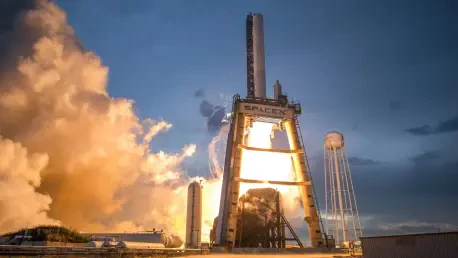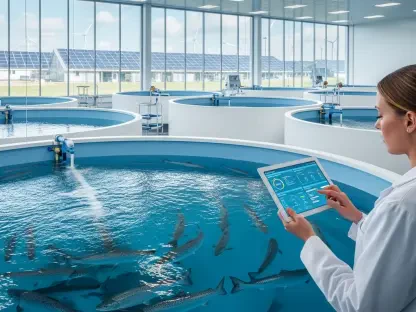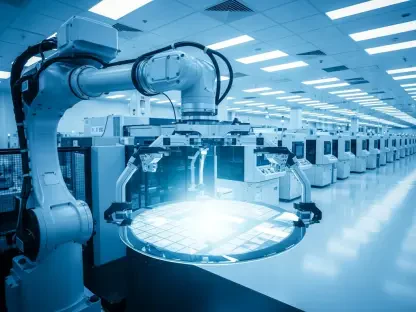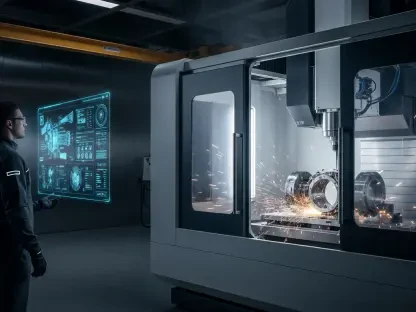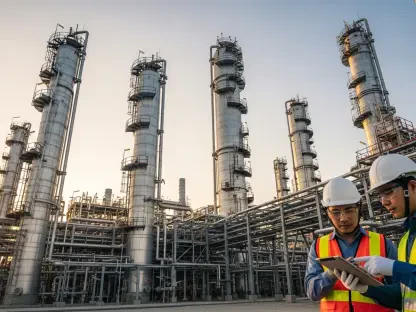The University of Florida, in collaboration with defense and space agencies, is pioneering an innovative approach to space construction. Through the Novel Orbital and Moon Manufacturing, Materials, and Mass-efficient Design (NOM4D) project, the team aims to redefine how space infrastructure is built by utilizing advanced laser technology for precision metal fabrication in orbit. This project challenges traditional methods that rely heavily on launching pre-assembled structures from Earth, tackling the constraints imposed by gravity and the limited payload capacity of rockets. With the potential to construct massive structures directly in space, like antennas and solar panels, this initiative could significantly enhance the sustainability and scope of future space missions.
The Shift to Orbital Manufacturing
Overcoming Terrestrial Constraints
The transition towards orbital manufacturing represents a significant shift in the way space missions are conceptualized and executed. Traditional methods have relied on launching pre-assembled components from Earth, an approach fraught with challenges due to payload weight and volume constraints. These limitations not only increase costs but also restrict the size and complexity of the structures that can be deployed. The NOM4D project intends to radically change this construct by introducing a new method of manufacturing directly in orbit, allowing for the development of far more extensive and sophisticated structures free from Earth’s gravitational confines. This shift not only promises greater efficiency in space exploration but also opens up the possibility of building infrastructures never before feasible with Earth-centric methods.
The move to fabricate components such as satellite antennas and solar panels in space is poised to revolutionize the way resources are allocated for space missions. Eliminating the need to transport fully assembled structures from Earth reduces both financial costs and resource requirements, offering a more sustainable alternative for future endeavors. This change acknowledges and addresses the unique challenges faced by traditional space manufacturing methods and seeks to break the cycle of dependency on Earth-based production. Furthermore, the NOM4D initiative is a significant step toward developing self-sufficient space environments, where needed structures can be assembled as required, thus supporting longer, more complex missions with minimal Earth intervention.
Laser-Formed Technology: A Central Component
Central to the shift towards orbital manufacturing is the introduction and utilization of laser-forming technology. This innovative approach involves using lasers to trace precise patterns on metal sheets, heating and bending them into desired shapes without the need for human intervention, which is impractical in zero-gravity environments. The precision and control offered by laser-forming technology are paramount, not only for shaping the metal accurately but also for maintaining the material’s inherent properties during the forming process. Overcoming these technical challenges is crucial in developing a scalable and reliable manufacturing method that can effectively support the ambitious goals of the NOM4D project.
The complexity of laser bending lies in the ability to achieve precise shapes while ensuring that the metal retains or enhances its essential properties, such as strength and flexibility. This process requires a sophisticated understanding of how materials respond to high-intensity laser heat, leading to ongoing research and development. The UF engineering team, led by Associate Professor Victoria Miller, places significant emphasis on experimentation and data collection, refining their methods through continuous testing of materials like aluminum, ceramics, and stainless steel. This detailed investigation ensures that each material responds optimally to the laser forming, contributing to the overall effectiveness and reliability of the technology.
In-Depth Research and Collaboration
Testing in Replicated Space Conditions
A crucial aspect of this ambitious endeavor involves collaboration with NASA’s Marshall Space Flight Center to replicate space conditions in their advanced thermal vacuum chamber. This partnership is instrumental in advancing the technology’s readiness level by observing how materials and processes perform in an environment mimicking outer space conditions. The chamber effectively simulates variables such as extreme temperature ranges, microgravity, and vacuum pressure, providing valuable feedback necessary to refine and optimize the laser-forming process. Nathan Fripp, a prominent team member, leads this critical phase of testing, ensuring that all challenges presented by the harsh environment of space are thoroughly addressed.
Conducting experiments in this simulated space environment allows researchers to identify any potential flaws or weaknesses in the technology before it’s deployed on a larger scale. This proactive approach to problem-solving underscores the project’s commitment to innovation and reliability, ensuring that each component manufactured in orbit meets stringent performance and safety standards. Additional experiments focus on understanding how different metals and ceramics respond under space conditions, aiding in fine-tuning the laser-forming technique to ensure optimum performance in real-world applications. These collaborative efforts represent cutting-edge research and underscore the necessity of thorough testing and refinement in developing robust space construction methods.
Real-Time Feedback Mechanisms
Another crucial component of the orbital manufacturing process involves implementing feedback mechanisms to enhance precision and reliability. Real-time sensors are proposed to measure and monitor bending angles during the manufacturing process. This dynamic recalibration ability greatly increases trust in the technology, as it ensures that structures built in space adhere to precise specifications without the need for direct human intervention. By adjusting the laser paths based on real-time data, the system becomes more adaptable to the unique challenges presented by the space environment, offering a practical solution for high-accuracy construction even in zero-gravity.
As the project progresses toward its planned completion in 2026, maintaining material integrity remains a primary focus. Ensuring that materials are both robust and adaptable after being formed is paramount to the project’s success. The inclusion of sophisticated feedback systems highlights the team’s foresight in addressing potential issues of precision that might be encountered during the manufacturing process. This real-time, data-driven approach illustrates a fusion of advanced technology and innovative problem-solving techniques, providing a strong foundation for future developments in space manufacturing and construction. This combined focus on accuracy and adaptability ensures that the NOM4D initiative is not only transformative but also sustainably designed for the long term.
Transformative Impact on Space Missions
The University of Florida is breaking new ground in space construction through a partnership with defense and space organizations. Their effort, known as the Novel Orbital and Moon Manufacturing, Materials, and Mass-efficient Design (NOM4D) project, is set to revolutionize how we build space infrastructure. Instead of relying on the traditional method of launching pre-assembled structures from Earth, which is constrained by gravity and the payload limits of rockets, they are developing advanced laser technology for precision metal fabrication directly in orbit. This approach allows the construction of large-scale structures in space, such as antennas and solar panels, without the drawbacks of Earth-based assembly. Such a method promises to drastically improve the sustainability and reach of future space missions by enabling more ambitious projects and reducing the dependency on Earth-based resources. If successful, this innovative approach could lead to a new era of space exploration, expanding our capabilities beyond what was previously imaginable.
